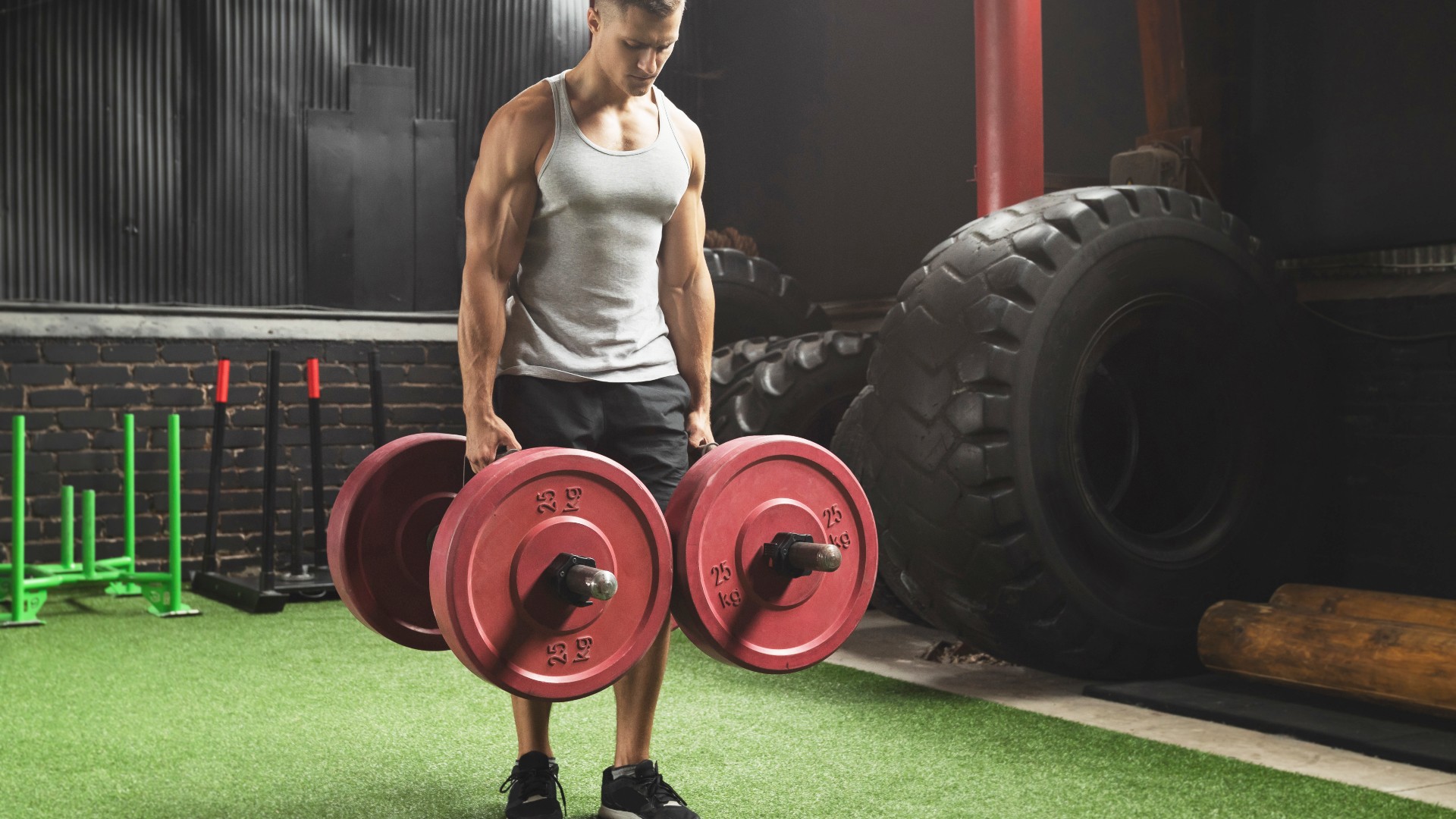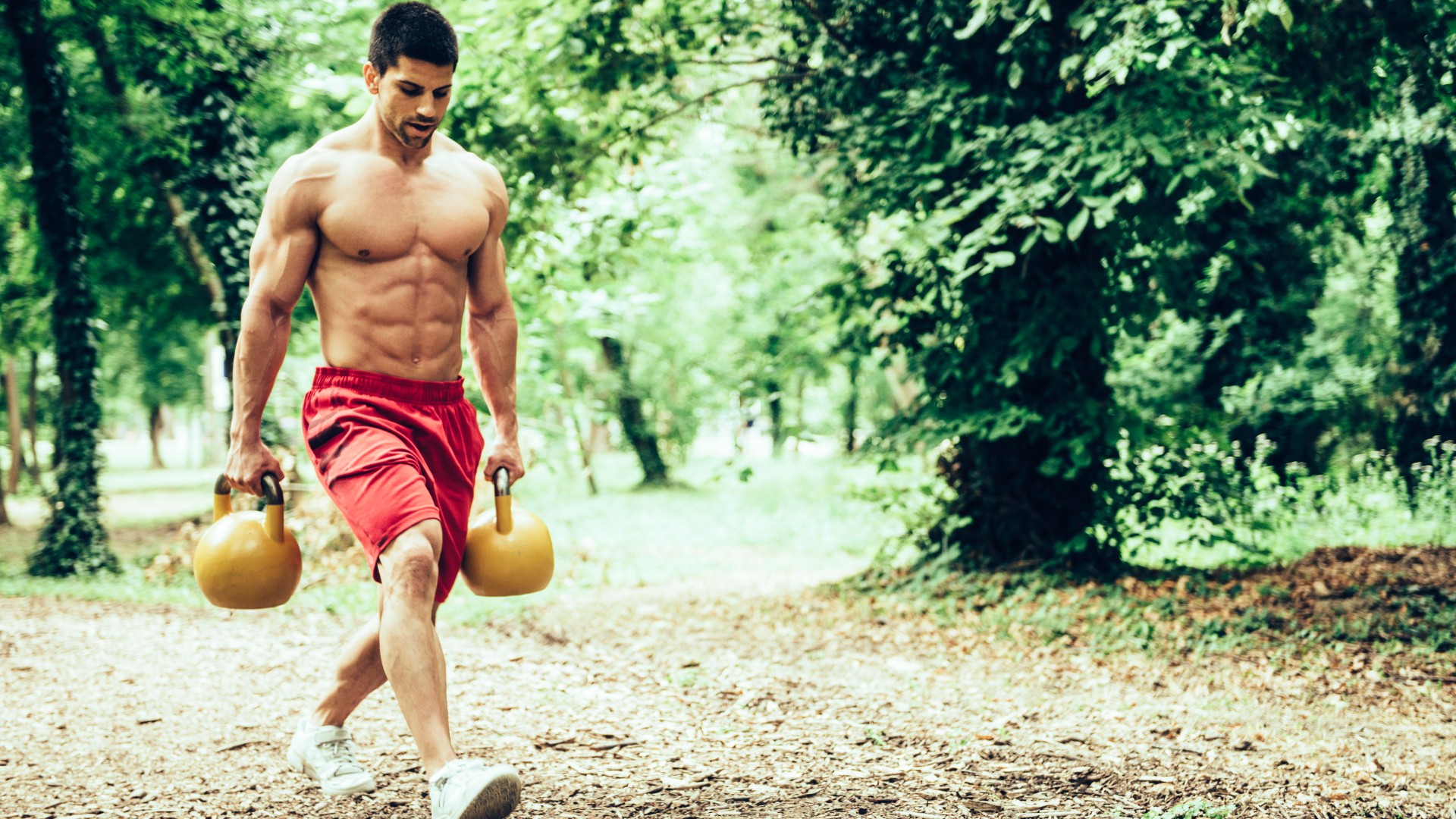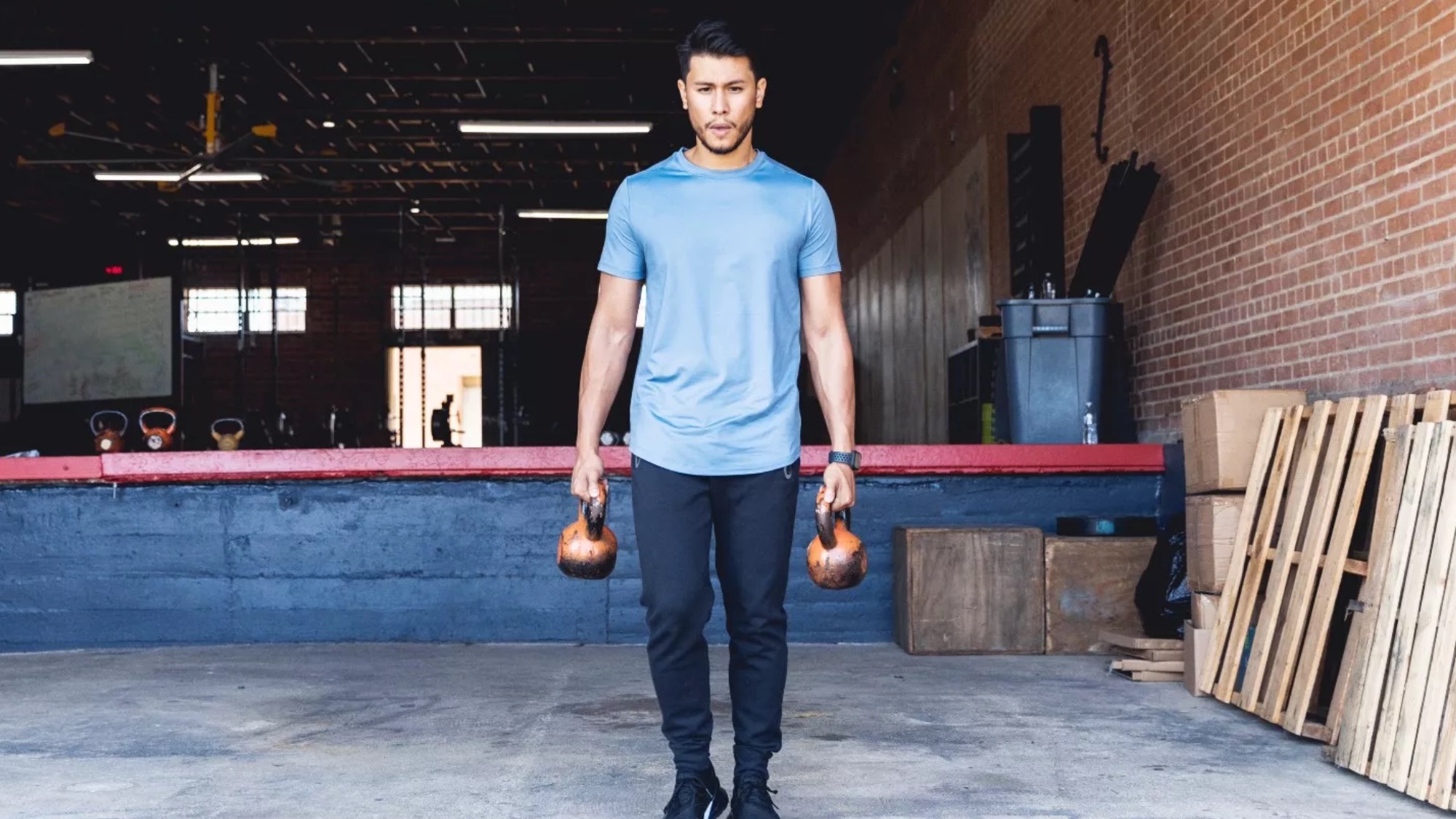
If you don’t know the farmer’s walk, it’ll soon become a staple in your strength programs. Walking with weights can build stamina, improve cardiovascular fitness and strengthen various muscle groups from head to toe. And the best bit? Anyone can do it from anywhere.
The farmer’s walk, or farmer’s carry as it’s also known, has traditionally been categorized as a shoulder and core exercise, but trust us, it works pretty much every major muscle group in your body. To execute the move, simply grip two weights like the best adjustable dumbbells, kettlebells or a trap bar and go for a walk. Where you travel is entirely up to you!
Whether you’re a beginner or not, the exercise can be scaled to any difficulty. Besides, if you’ve carried groceries home before, you’ve already nailed it. Below, we cover how to do the farmer’s walk with proper form, the benefits and a variation you can try from home.
Farmer’s walk: Benefits
Before we dive in, why should anyone be doing the farmer’s walk?
The strength and conditioning exercise has been around for years and has since been popularized by the CrossFit and functional training communities. Because it’s a compound exercise targeting more than one muscle group, it closely resembles familiar movement patterns — walking or climbing while carrying weight — and can improve movement quality and posture and build strength and muscle.
The farmer’s walk is also a super efficient way to increase your heart rate. You could walk across flat ground, uphill or upstairs to make the exercise even harder. The movement primarily strengthens your biceps and triceps. shoulders, back, core and legs — even your chest under heavier loads. It also dips its toes into cardiovascular training, and you can get a lot out of its simplicity without heavy weights if you’re just starting out.
As you get older, building stronger bones, joints and muscles becomes paramount. The farmer's walk, especially when done with heavy weights, contributes toward a process called bone loading. Putting bones under stress, like during resistance training, stimulates bone growth and could prevent injuries associated with ageing.

The farmer’s walk also combines isometric and isotonic exercise, meaning muscles like your shoulders and core are activated without shortening or lengthening (isometric contraction), and others move throughout (isotonic contraction). Some research has even shown that the exercise provides similar muscle activation to a deadlift with less strain on your lower back.
Recently, I did the farmer’s walk every day for a week — here’s what happened and what I got out of it, including a deep dive into the benefits for your body and how the exercise recruits muscles.
How to do the farmer's walk
You could choose free weights like kettlebells or dumbbells or opt for groceries or filling water bottles if you don’t have access to weights. Gym-goers could also use a trap bar with weights loaded on either side. A general rule of thumb is to load heavier for strength training and lighter for cardiovascular workouts.
Working single-sided with one weight is a great way to challenge balance, coordination and stability. We’ll use two kettlebells as an example, but you can substitute the weights and still follow the instructions below.
How:
- Stand with your feet hip-width apart and two kettlebells placed on either side of your feet.
- Bend your knees and lower into a squat, keep your chest lifted and the weight evenly distributed across your feet. Look ahead
- Grip both kettlebells, engage your core and set your shoulders back and down
- Push through your heels to stand. Begin walking without leaning forward, backward or over to one side.
Consciously squeeze as many muscles as possible and pull your shoulder blades back and down to prevent hunching. Stand tall as you walk while keeping a firm grip on the weights.
You could work for a set number of steps or measure by distance. Try 2-3 sets or accumulate as much distance or time as possible against a time cap or rep target. For an example of how to program the farmer’s walk, check out this 5-move Metcon workout.
Farmer's walk: Variations to try

You could try walking uphill, taking the stairs or using different weights to progress the move and develop lower body power, but my favorite way to mix things up is by using the farmer’s hold. To do it, simply follow the steps above without walking.
Holding the weights in a static standing position helps develop grip strength and the muscles in your forearms, arms, shoulders, core and upper trapezius (muscles across your upper back). A great way to test grip strength further is by holding a barbell plate instead of free weights.
Start with a 20-second hold and short rest, then progressively increase the time. You could add a farmer’s hold during you-go-I-go workouts when waiting for a partner to complete their reps.
Farmer's walk: Common mistakes
These are the most common mistakes we see.
Hunching or rounding through the shoulders
When the primary muscles fatigue, your shoulders may begin internally rotating. Internal shoulder rotation can cause tight chest muscles and overworked, weaker back muscles, also preventing your rotator cuff muscles from switching on.
Your rotator cuffs are muscles that surround and support your shoulder joint, and without them working optimally, you’re more likely to experience injury. The farmer’s walk and farmer’s hold work the upper body hard to maintain postural stability and balance. Try to keep shoulders pulled back and down, resetting posture when you notice your form sliding.
Leaning
Under heavy loads, it’s tempting to lean to one side, forward or backward. Imagine a piece of string running through your midline and out the top of your head. Then imagine someone pulling that string upward, creating a tall posture and lengthening your spine.







